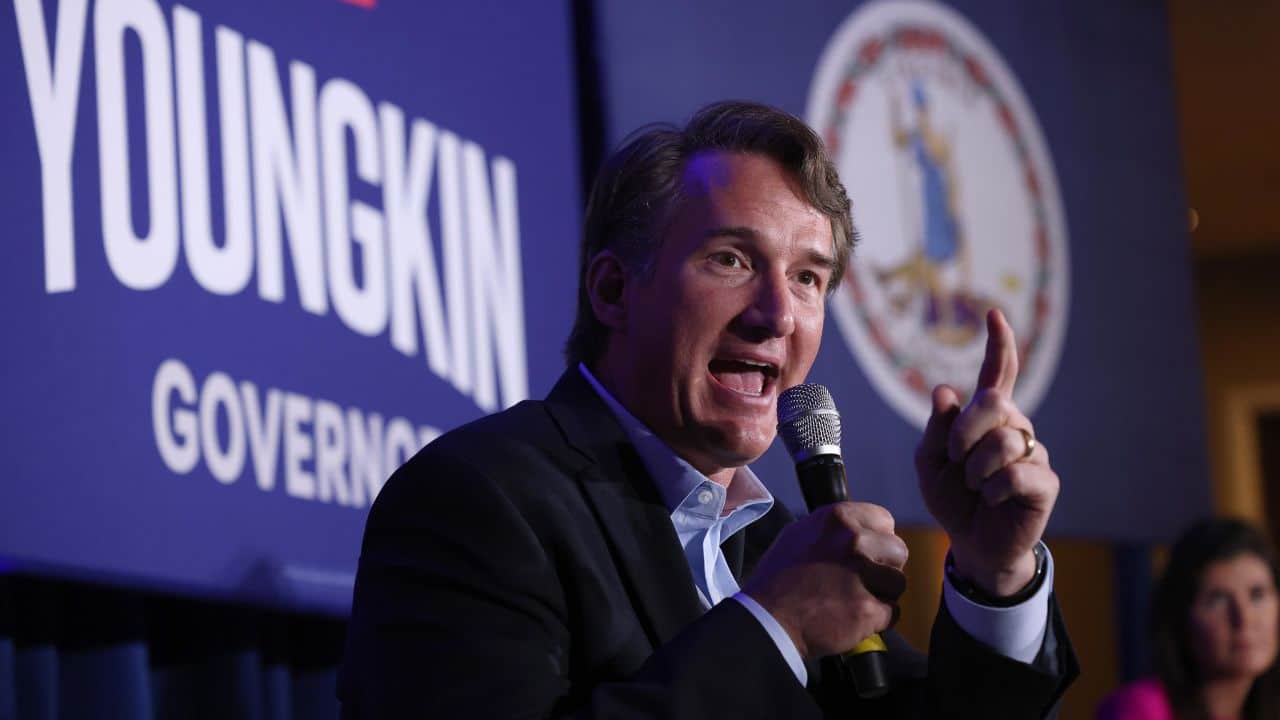Biden looks to reassert US influence in Africa with summit

This post was originally published on this sitePresident Biden is hosting 50 leaders from Africa in Washington this week for a high-profile summit seeking to bolster future relations with the continent and counter Chinese and Russian influence. It is the first time since 2014 the White House will host a summit with African leaders as […]
House, Senate negotiators announce ‘bipartisan, bicameral framework’ for 2023 spending package

The top House and Senate negotiators working on a government spending bill for fiscal 2023 said late Tuesday they have agreed on a “bipartisan, bicameral framework” to fund the government through September. Current funding for the federal government expires on Friday night, and Congress is expected, though not guaranteed, to pass a stop-gap spending bill to allow the negotiators time to finalize the omnibus spending package.
Sen. Richard Shelby (Ala.), the GOP’s lead negotiator, said that “if all goes well, we should be able to finish an omnibus appropriations package by Dec. 23,” the deadline set by Senate Minority Leader Mitch McConnell (R-Ky.). House Appropriations Chair Rosa DeLauro (D-Conn.) said appropriators will now “work around the clock to negotiate the details of final 2023 spending bills that can be supported by the House and Senate and receive President Biden’s signature.”
Appropriators have “largely settled on an $858 billion defense budget in recent weeks, which amounts to a 10 percent boost over current defense funding levels,” Politico reports, but the two sides were still recently billions of dollars apart on domestic spending. Senate Majority Leader Chuck Schumer (D-N.Y.) said earlier Tuesday that the must-pass spending bill will include money for Ukraine and a revamp of the Electoral Count Act that passed out of subcommittee with wide bipartisan support.
With such tight deadlines, a handful of senators could gum up the works and force a government shutdown. And House Republican leaders and some hard-right members are pushing to shut down the government until the GOP takes control of the lower chamber in January. “That would give House Republicans more leverage over what’s in the legislation,” The Associated Press reports. Democrats warn that if no omnibus deal is reached, the government may have to be funded at current levels for fiscal 2023, leaving the GOP-sought Pentagon budget hikes on the cutting-room floor.
Exclusive: US finalizing plans to send Patriot missile defense system to Ukraine

The Biden administration is finalizing plans to send the Patriot missile defense system to Ukraine that could be announced as soon as this week, according to two US officials and a senior administration official.
Supply-Chain Shortfalls Targeted by New Bill
This post was originally published on this siteSen. Marco Rubio and Rep. Ro Khanna are proposing steps to force federal-agency leaders to take the lead in preventing future shortfalls.
Youngkin schedules February special election in Virginia to fill Donald McEachin’s seat

A special election in Virginia to replace the late Democratic Rep. Donald McEachin, who died last month, will take place in February, Gov. Glenn Youngkin announced Monday.
Lockerbie bombing suspect to make first court appearance on Monday in Washington

A Libyan man accused of being involved in making the bomb that destroyed Pan Am flight 103 over the town of Lockerbie in December 1988 is expected to make an initial court appearance Monday afternoon during an arraignment hearing in Washington, DC.
Congress faces looming government shutdown deadline at end of the week

Lawmakers face a Friday at midnight deadline when government funding is set to expire — and the House and Senate will likely have to pass a short-term extension to avert a shutdown at the end of the week, which would give negotiators more time to try to secure a broader full-year funding deal.
Biden announces $2.5 billion loan to help GM and LG make EV batteries

The US Department of Energy’s Loan Programs Office will announce Monday that it is issuing a $2.5 billion loan to help start three lithium battery manufacturing hubs in Ohio, Tennessee and Michigan.
Ukraine says it destroyed Russia’s Wagner militia Luhansk headquarters, army base in Melitopol

Russia continued to hit Ukrainian cities with missiles and Iranian-made drones over the weekend, causing serious damage to the electrical grid in Odesa, but Ukraine landed some blows of its own on Russia forces in occupied eastern Ukraine. The Ukrainian governor-in-exile of occupied Luhansk, Serhiy Haidai, said Sunday that Ukrainian forces had destroyed a hotel in Kadiivka that served as the regional headquarters of the Wagner Group militia, causing “significant losses.”
Wagner’s notorious mercenaries have been active in Russia’s bloody effort to take Bakhmut. Ukrainian forces on Saturday hit Kadiivka, “just where Wagner headquarters was located,” and “a huge number of those who were there died,” Haidai said. “I am sure that at least 50 percent of those who managed to survive will die before they get medical care.”
Ukrainian and Russia officials also said Ukraine fired rockets at the occupied city of Melitopol on Saturday, hitting at least one building commandeered by Russian troops, though there was no agreement on casualty numbers. The pro-Russian governor of Zaporizhzhia region, which includes Melitopol, said two people were killed and 10 injured by the Ukrainian HIMARS rockets, while the exiled major Ivan Fedorov said as many as 200 Russian troops were killed. Russian and Ukrainian social media channels said there were dozens of casualties.
Oleksiy Arestovych, an adviser to Ukrainian President Volodymyr Zelensky, explained Sunday that Ukraine is targeting Melitopol because all supply lines from Russia to eastern Kherson and Crimea run through it. “If Melitopol falls, the entire defense line all the way to Kherson collapses,” he said. “Ukrainian forces gain a direct route to Crimea.” Pro-Kyiv partisans, who have been hitting targets in Melitopol for months, claimed credit for explosions in Crimea on Saturday, including at a military base.
Ukraine’s recapture of western Kherson province in November put Melitopol and other logistics hubs close to Crimea in range of the U.S.-supplied HIMARS rockets. “But Ukraine has so far been able to mount only a limited defense against Moscow’s campaign of missile and drone attacks, The Wall Street Journal reports. Odesa’s power grid will take weeks to repair, Zelensky said. Ukrainian Prime Minister Denys Shmyhal said Sunday that “after eight waves of missile attacks on the country, all thermal and hydroelectric power stations are damaged,” as are 40 percent of “high-voltage network facilities.”
U.S. reportedly set to announce major fusion energy breakthrough

The U.S. Energy Department will announce Tuesday that government scientists at the Lawrence Livermore National Laboratory in California have for the first time produced a net energy gain in a fusion reaction, a major step toward limitless, inexpensive clean energy, the Financial Times and The Washington Post reported Sunday. Scientists have been trying since the 1950s to recreate the kind of fusion reaction that powers the sun, but none have been able to produce more energy than the process consumes.
Energy Secretary Jennifer Granholm is scheduled to unveil a “a major scientific breakthrough” at the Lawrence Livermore lab on Tuesday, though the Energy Department is tight-lipped about the nature of the announcement.
“Initial diagnostic data suggests another successful experiment at the National Ignition Facility,” where the fusion research is talking place, the Lawrence Livermore National Laboratory told the Financial Times. “However, the exact yield is still being determined and we can’t confirm that it is over the threshold at this time.” A lab official told the Post that the results are still being analyzed and no findings will be released until Tuesday, though the Financial Times reports the fusion reaction produced about 120 percent of the energy it consumed.
“The breakthrough was already being widely discussed by scientists,” the Financial Times said, citing two people familiar with the findings who also said the greater-than-expected energy output had damaged some of the diagnostic equipment.
The goal of fusion research is to harvest energy from colliding two atoms together at incredibly high speeds. The type of fusion studied at the Lawrence Livermore lab is called inertial confinement fusion, which involves hitting a tiny ball of hydrogen plasma with the world’s biggest laser.
Even if this experiment’s success is confirmed, we’re still years or decades from fusion power flowing through the energy grid, though “the technology’s potential is hard to ignore,” the Financial Times reports. “Fusion reactions emit no carbon, produce no long-lived radioactive waste, and a small cup of the hydrogen fuel could theoretically power a house for hundreds of years.” It’s the “holy grail” of clean energy, Rep. Don Beyer (D-Va.) said earlier this year at the launch of a new White House fusion power strategy. “Fusion has the potential to lift more citizens of the world out of poverty than anything since the invention of fire.”
